Aiming to Change the Treatment Paradigm to Restore Neuronal Health
At Athira, We Are Focused on Improving Neuronal Health by Promoting Natural Repair Systems
Neurodegenerative diseases — like Alzheimer’s and Parkinson’s — occur when the brain is unable to build, restore, or maintain connections. Our approach involves designing small molecules to enhance the activity of the neurotrophic hepatocyte growth factor (HGF) system that is critical to normal brain function. We believe our findings support the potential of our lead candidate, fosgonimeton (ATH-1017), to improve function, offer neuroprotection, and modify the course of neurodegenerative diseases.
Amyotrophic Lateral Sclerosis (ALS)

75,000 people
around the globe are affected by ALS

Only 3
disease-modifying drugs for ALS are approved

Zero
ALS drugs target neurotrophic factors with a multimodal mechanism of action
Amyotrophic Lateral Sclerosis (ALS), also known as motor neuron disease or Lou Gehrig’s disease, is a progressive neurodegenerative disorder. In ALS patients, motor neuron degeneration leads to progressive loss of muscle movement. Over time, patients experience muscle weakness, eventual paralysis, and death as they are unable to breathe.
ALS is a rare disease. Globally, approximately 75 thousand people are affected by ALS, with 40% of cases occurring in the United States. Approximately 10% of ALS cases are inherited whereas for approximately 90% of individuals, ALS occurs without any known family history.
ATH-1105, a small molecule positive modulator of the HGF/MET pathway, is currently being evaluated in a Phase 1 clinical trial. We believe ATH-1105, with its differentiated multimodal mechanism of action, has the potential as an effective for ALS, subject to clinical investigation.
(ALS Association)
Alzheimer’s Disease

55 Million People
around the globe are living with Alzheimer’s and other dementias today

6.5 Million U.S. Patients
living with Alzheimer’s dementia today
Limited
available treatment options
Alzheimer’s disease (AD) is a progressive dementia caused by widespread neurodegeneration. The causal pathophysiological mechanism of AD has yet to be identified. However, it has been established that the loss of synaptic density and breakdown of the neuronal network can lead to cognitive impairment in AD and other forms of dementia.
AD is the most common form of dementia and the largest unmet medical need in neurology.
Globally, approximately 55 million people are currently living with Alzheimer’s and other dementias. This incidence is projected to increase to over 100 million by 2050.
There are five stages associated with AD: preclinical, mild cognitive impairment (MCI) due to AD, mild dementia due to AD, moderate dementia due to AD, and severe dementia due to AD.
Fosgonimeton has been evaluated in individuals with mild-to-moderate Alzheimer’s disease.
(Albert et al, 2011; Alzheimer’s.net; Alzheimer’s Association; Citron, 2010; He et al., 2009; Jack Jr., et al., 2016; McKhann et al., 2011; National Institute on Aging; Sperling, et al., 2011; World Health Organization)
Parkinson’s Disease, PD Dementia and Dementia with Lewy Bodies

10 Million
people globally are living with PD

3rd Most Common
form of dementia is DLB, globally

Only One
therapy currently approved for PDD
Disorders associated with Lewy bodies (abnormal protein deposits in the brain) are subdivided into Dementia with Lewy bodies (DLB), an underdiagnosed cause of dementia in the elderly, and Parkinson’s disease dementia (PDD), cognitive impairment appearing in people diagnosed with Parkinson disease (PD).
In general, DLB and PDD are clinically distinguished by the initial sequence of dementia symptoms.
Nearly 1 million people in the US and more than 10 million people globally are living with PD. While those with PD commonly experience deficits in motor symptoms, approximately 50% suffer from PDD, a progressive neurodegenerative disorder, defined by changes in thinking, memory, and behavior. Only a single therapy is currently approved for PDD, and more specific and novel approaches addressing this disease are needed.
DLB is the third most common cause of dementia accounting for 5-15% of all dementia cases globally.
Both PDD and DLB account for an underserved dementia population. With a lack of specific therapies today for either PDD or DLB, there is a substantial need for a therapy with the potential to slow or delay neurodegeneration, the main underlying condition contributing to progressive deterioration in dementia symptoms. Fosgonimeton has been evaluated in patients with PDD and DLB.
(Alzheimer’s Association; Galasko, 2017; Parkinson’s Foundation)
